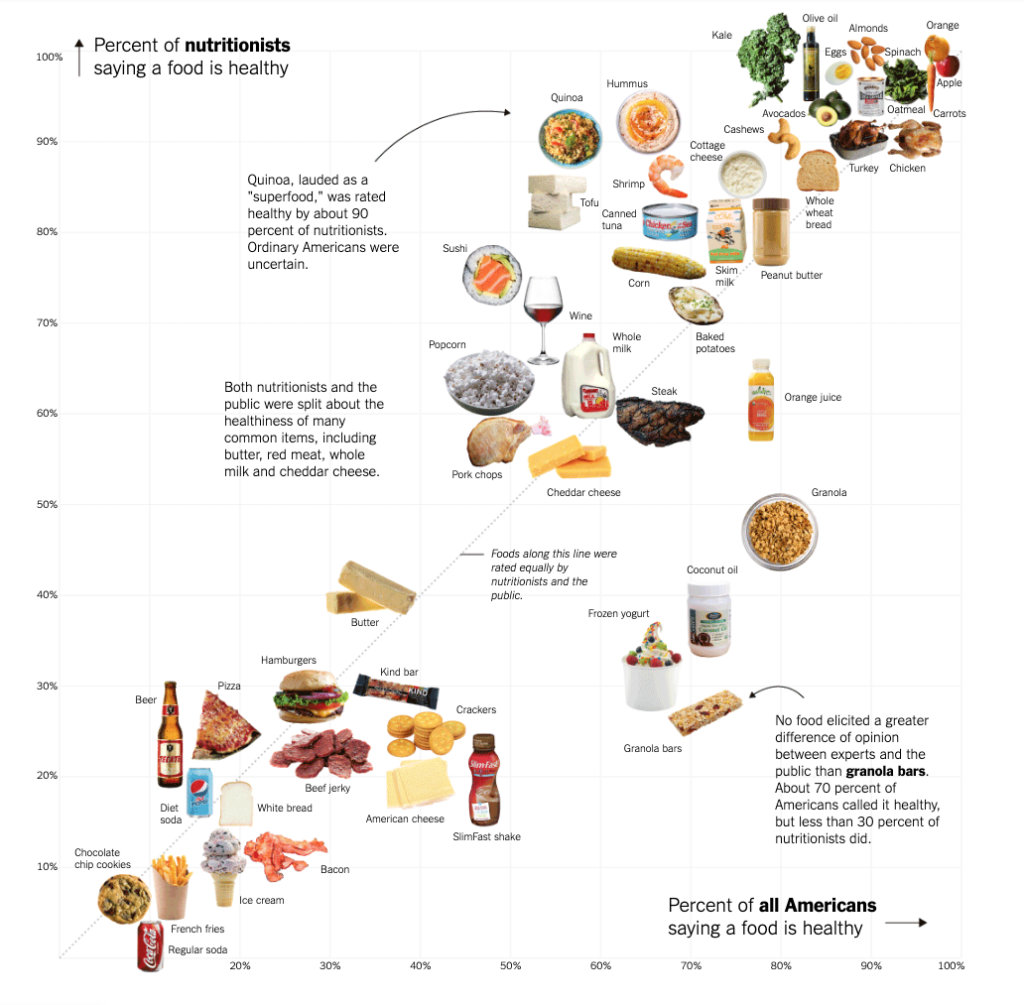
Changing opinions, clickbait-y headlines and the latest get thin quick schemes keep us in a state of perpetual confusion about what to eat.
- Should I cut sugar completely out of my diet?
- Can I eat carbs and still lose weight?
- Should I fast?
- Keto?
My favorite advice on nutrition comes from Michael Pollan…
Eat real food. Not too much. Mostly plants.
I recommend my clients choose real food (either straight from nature or minimally processed like rolled oats) 90-95% of the time and what I call “joy” food (whatever you LOVE) the other 5-10% of the time.
Eating a mostly whole foods diet helps us naturally increase our fiber intake, which leads to feeling more satisfied overall.
For the most part, the public and the experts agreed.

Only four of the foods surveyed were considered healthy by the Americans public but not by the experts…
- Granola
- Granola bars
- Coconut oil
- Frozen yogurt
Opinions differed when it came to Orange Juice and Slim Fast shakes as well, but not by as wide a margin. And a few foods were ranked healthier by the experts than the average consumer (hummus, quinoa, tofu, sushi, shrimp, wine).
Another recent article looked at data from MyFitnessPal’s 4.6 million users to determine what people who lost the most weight were eating.
Conclusion…
The most successful users ate diets rich in fiber (grains, veggies, fruits, nuts).
Knowing what to eat is only part of the equation. How much we eat is the other component.
I’m not a big fan of counting calories, grams or points. At least not long-term. It can come in handy if you’re out of touch with how much you’re consuming versus what your body needs to function well. But I think a simpler approach, such as aiming for four whole foods based meals per day can be just as effective.
For most women, I recommend the following guidelines:
- 1-2 palm sized servings of protein dense food at each meal;
- 1-3 fists of vegetables at each meal;
- 1 cupped handful of carb dense food (e.g. beans, oatmeal, quinoa, brown rice) or fruit at most meals; and
- 1 thumb of fat dense foods at most meals (e.g. oil based salad dressing, butter, guacamole, nut butter).
The recommendations above are not set in stone. I always collaborate with individuals to determine the right formula for their unique preferences + body type + goals. We gather data as we go and make changes when necessary, implementing one new change at a time.
Keeping a simple food journal (time of day + what you ate) is the best way I’ve found to raise awareness of what you’re consuming and manage portions. I’m a big fan + user of You Ate – a free photo food journaling app.
I think we can distill the overwhelming amount of nutritional information available into four simple suggestions…
- Eat real food most of the time.
- Include lots of high fiber foods (which will happen naturally with a whole foods diet).
- Eat meals/snack less
- Pay attention to how much you’re eating.
Still confused? Check out this brilliant article + infographic courtesy of Precision Nutrition.
💙 Robyn
To learn more about Personal Health Coaching click HERE.